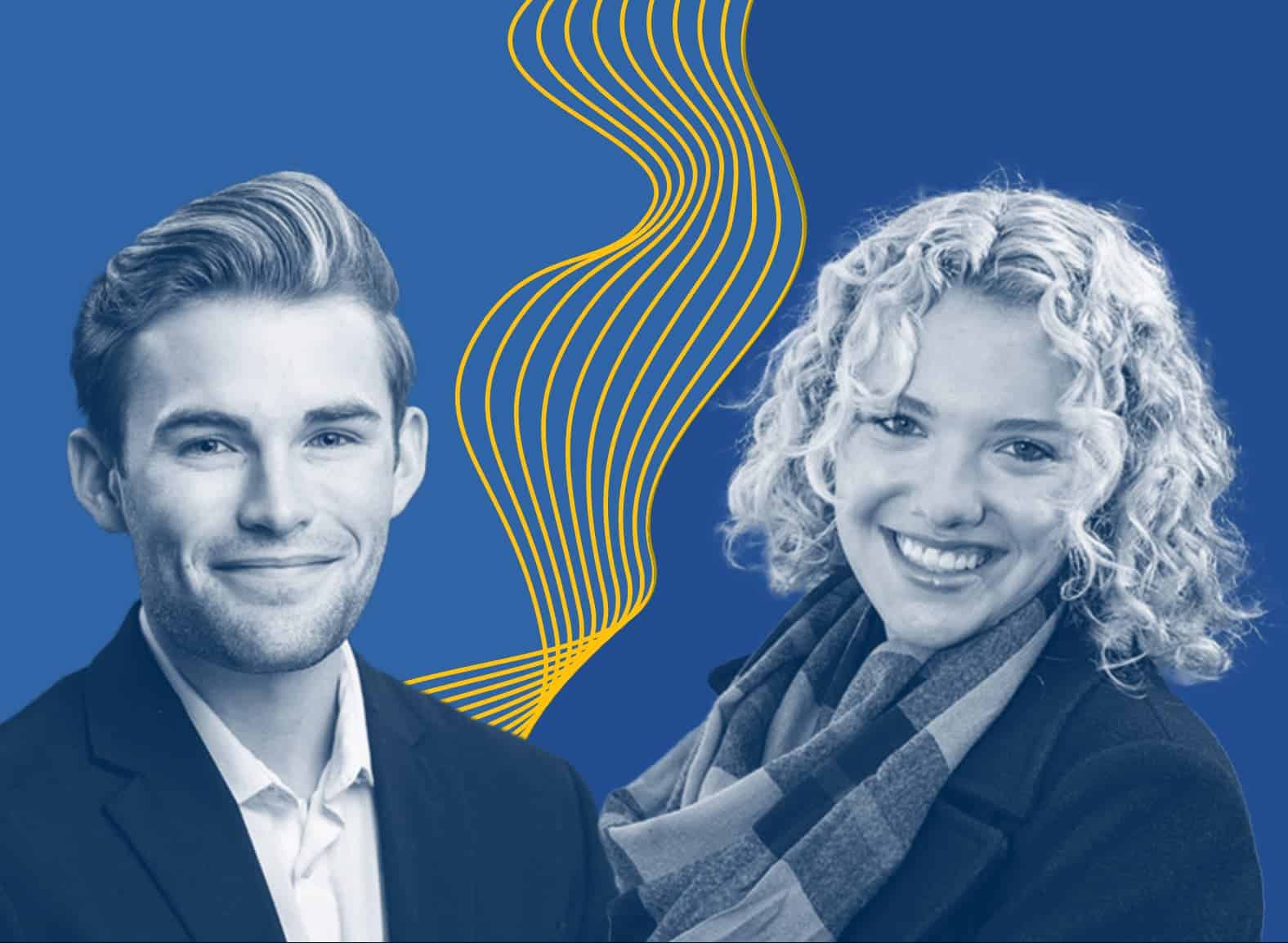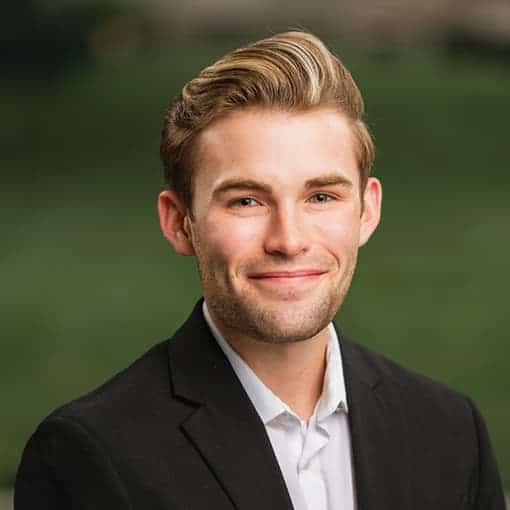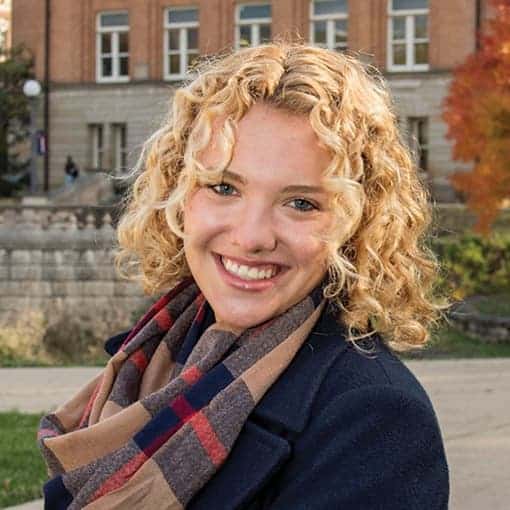
NERS graduate students receive NSF fellowships
Logan Burnett and Nataly R. Panczyk have been awarded prestigious fellowships from the National Science Foundation Graduate Research Fellowship Program.

Logan Burnett and Nataly R. Panczyk have been awarded prestigious fellowships from the National Science Foundation Graduate Research Fellowship Program.
Logan Burnett and Nataly R. Panczyk have received fellowships from the National Science Foundation Graduate Research Fellowship Program. In receiving these prestigious fellowships, both Logan and Nataly have demonstrated their exceptional dedication to advancing scientific research and innovation in their respective fields. Their work, which will be done under the mentorship of Prof. Majdi Radaideh in the Artificial Intelligence and Multiphysics Simulations (AIMS) Laboratory when they begin their graduate studies at NERS this fall, reflects the program’s mission to ensure the quality, vitality, and diversity of the U.S. scientific and engineering workforce. With their diverse backgrounds and ambitious goals, Logan and Nataly exemplify the promise of the next generation of leaders in STEM, poised to make significant contributions to nuclear engineering and artificial intelligence.

Hailing from Birmingham, Alabama, Logan’s academic journey began at the University of Alabama at Birmingham, where he pursued his undergraduate degree in physics. His diverse academic background and the reputation of NERS led him to pursue a graduate degree here at U-M.
“I chose to attend NERS because I want to be an industry leader for the next generation of nuclear power,” said Logan. “Prof. Radaideh’s research on integrating artificial intelligence with nuclear applications is the perfect opportunity to utilize my background in physics, mechanical engineering, and high-fidelity simulation.”
At the heart of Logan’s research lies a mosaic of experiences and insights gleaned from his multifaceted journey through various academic and research environments. As an undergraduate, Logan simultaneously worked in three different labs within three separate fields.
While at the University of Alabama at Birmingham, he first joined Prof. Cheng-Chien Chen’s computational condensed matter group where he simulated rare-earth materials on various national supercomputers. Knowing that he’d eventually like to study nuclear energy in graduate school, he also joined Prof. Suzanne Lapi’s lab at the Cyclotron Facility where he helped prepare, irradiate, and analyze radioisotopes for medical imaging applications. It was there that he developed a code for speeding up analysis which is currently in the pipeline of being published.
The third lab Logan joined was Prof. Emilio Baglietto’s Computational Fluid Dynamics Group at the Massachusetts Institute of Technology as part of the MIT Summer Research Program. He wasn’t happy with leaving his project after the summer, so he continued working remotely and recently brought the project to completion as it was published in Nuclear Technology.
Looking towards the future, Logan harbors ambitious plans for leveraging his expertise to shape the landscape of the nuclear energy sector. Post-PhD, he envisions himself playing a pivotal role in microreactor startups, capitalizing on his experiences at NERS to drive innovation in artificial intelligence-assisted operation and management. However, beyond corporate endeavors, Logan’s ultimate goal is to establish his own startup focused on the deployment of microreactors—a venture driven not only by commercial aspirations but also by a profound sense of purpose in bringing reliable energy to underserved communities around the globe.
“I’d like to recognize my main PI from undergraduate, Prof. Cheng-Chien Chen, as I would’ve never made it to NERS without him,” said Logan. “He has been and no doubt will continue to be one of my mentors, and much of my success is a product of his incredible dedication and mentorship. Throughout my development as a researcher, he was persistent in getting me involved in collaborations, presenting at conferences, and pushing me to produce the best research possible. I think our relationship also testifies to the success that can take place when a PI treats their students as friends and collaborators rather than just a worker. I hope to implement the same ideology as I pursue leadership within the nuclear industry.”
“Logan’s commitment and passion to develop the next generation of nuclear power was truly inspiring from the first meeting we had,” said Radaideh. “I am excited to be part of his professional growth and I look forward to seeing him establish a great career at NERS and become a leader in the industry.”

Hailing from Palatine, Illinois, Nataly’s journey to U-M began with a foundation laid at the University of Illinois Urbana-Champaign, where she earned her Bachelor of Science degree in Nuclear, Plasma, and Radiological Engineering in 2024. It was during her undergraduate studies that Nataly became aware of the NERS Prof. Majdi Radaideh’s research into explainable artificial intelligence methodology for nuclear applications.
“I’ve been interested in doing my PhD in Nuclear Engineering essentially since my second semester of undergrad,” said Nataly. “Prof. Radaideh’s work in artificial intelligence sounded fascinating to me, so I applied. It helped that U-M is one of the best-ranked programs in the country.”
Nataly’s research centers around enhancing the capabilities of artificial intelligence within the realm of nuclear engineering. Collaborating with Prof. Radaideh, she aims to develop an explainable artificial intelligence methodology that not only enhances the understanding of artificial intelligence-generated conclusions but also fosters trust in its outcomes.
“Having a model-agnostic explainable artificial intelligence tool would not only be huge for nuclear from a regulatory perspective, but could offer benefits to other highly regulated, and/or high-risk industries as well,” said Nataly.
Nataly’s ultimate goal is clear and resolute: to contribute to the proliferation of carbon-free energy sources, with a steadfast belief in the pivotal role of nuclear power.
“My goal is to help put as many carbon-free electrons on the grid as possible,” said Nataly. “Nuclear power is the most efficient way to get there.”
Post-PhD, she envisions herself actively engaged in the operation and deployment of existing and emerging nuclear reactors worldwide. Recognizing climate change as a collective challenge, Nataly is committed to leveraging her expertise to combat this global crisis, one electron at a time. Her vision extends beyond national borders, encompassing communities and countries alike, united in the pursuit of a sustainable future.
“I am especially grateful for my professors at the University of Illinois Urbana-Champaign who not only helped me earn this fellowship, but who also taught, supported, and advised me throughout my undergraduate career,” said Nataly. “Specifically, Prof. Caleb Brooks, Prof. Madicken Munk, and Prof. Tomasz Kozlowski were all willing to give me their time and attention whenever I needed it. Without them, I simply could not have gotten where I am today.”
“Nataly stands out among the few students I observed who diligently prepared for graduate school well in advance,” said Radaideh. “I can see her emerging as an outstanding leader in our field, focusing on a unique intersection of reactor design, explainable AI, and their societal implications.”